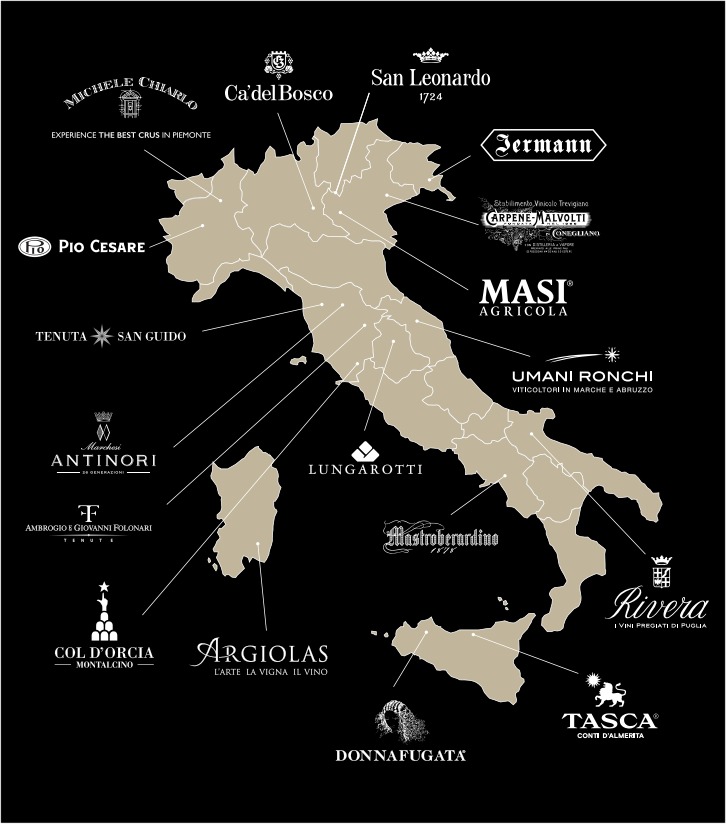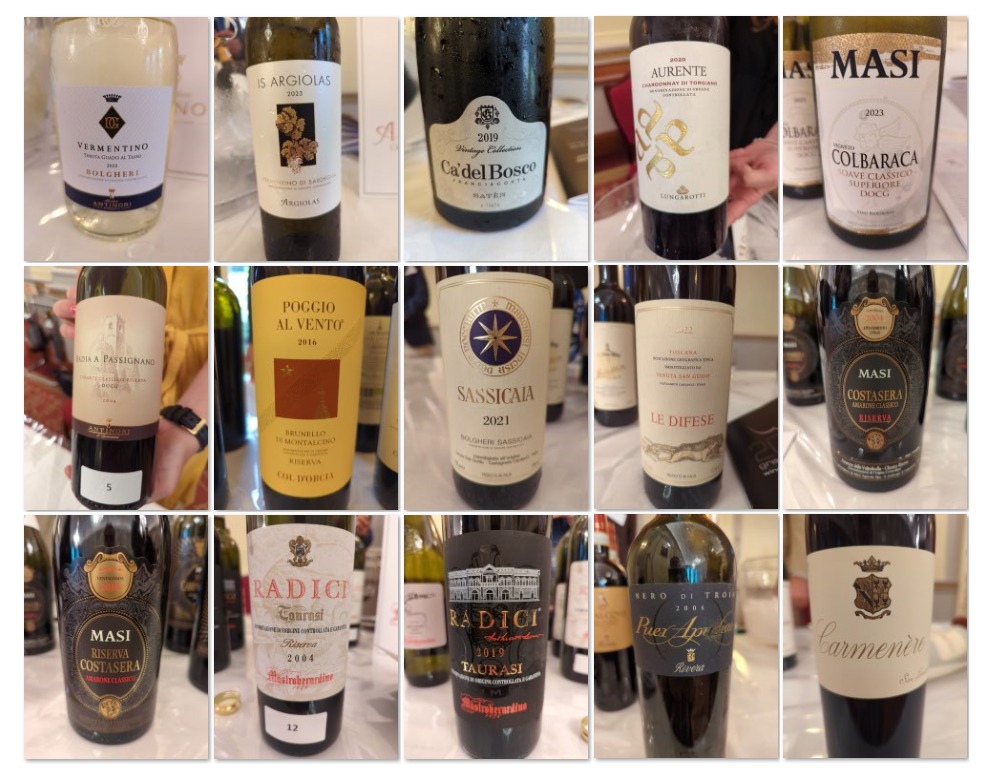
On 25 June 2024, I attended the Istituto Grandi Marchi wine tasting event in London. The Istituto Grandi Marchi, founded in 2004, is a group comprising eighteen top Italian wineries. Their mission is to promote the culture and trade of high-quality Italian wine. As part of their global tour, they brought a selection of exceptional wines to London’s Plaisterers’ Hall.
All these wineries are family-owned and have been operational for at least 25 years, with some having histories spanning centuries. They own estate vineyards, notable for their rich history and longstanding traditions. They are dedicated to maintaining a strong focus on education, innovation and development of new markets.

These are the wines that stood out for me:

Several Vermentinos stood out, particularly the Argiolas Vermentino di Sardegna 2023 and the Antinori Vermentino 2023. Both wines were striking for their minerality, salinity and substantial mouthfeel, making them especially suitable for pairing with food.
There were a few Chardonnays, which is not something I would typically associate with Italy. The Aurente Chardonnay di Torgiano DOC 2020 was particularly compelling. It was aromatic and oaky, reminiscent of the best Australian Chardonnays from the past.
The Masi Colbaraca Soave Classico Superiore 2023, made from 100% Garganega grapes with half of the wine aged in oak, is a superb, sophisticated example of Soave. It boasts an intense nose with distinct hints of ripe pears and sweet spices, while the palate is rich and creamy.
The Ca’ del Bosco Franciacorta 2019 was impressive. Comprising 85% Chardonnay and 15% Pinot Blanc, spending four years on lees. Less sugar is added compared to other Franciacortas, resulting in a creamy mouthfeel and Champagne-like qualities.
I unfortunately wasn’t able to attend the masterclass featuring 2004 vintage wines, celebrating the 20th anniversary of the founding of the Istituto Grandi Marchi. Fortunately, some of the excess wines from the masterclass were available during the walkaround tasting. These wines added extra depth to the event and, in some cases, offered a fascinating comparison to more recent vintages.
The Antinori Badia a Passignano Chianti Classico 2004 was outstanding. It had an aroma of earthy leather with hints of plum. On the palate, it offered plenty of dark fruit and well-matured tannins.
For the Poggio al Vento Brunello di Montalcino, it was possible to compare the 2016 and 2004 vintages. The 2016 vintage presented a rich bouquet with fruity notes and ripe tannins. In contrast, the 2004 vintage had settled into something luxurious, with all the edges rounded off beautifully.
I tried the latest vintage of Sassicaia 2021. As expected, it had expressive cherry fruit notes with a great aroma and length. However, another offering from the same producer, Tenuta San Guido, is the Le Difese 2022. This hidden gem is a blend of Cabernet Sauvignon and Sangiovese. Aged in barrique for 12 months, it is soft, round, elegant and velvety, with balanced freshness and hints of cherries, blackberries, chocolate, herbs and sweet spices. Remarkably, it comes at just 1/10th of the price of Sassicaia.
Two further outstanding wines were the Masi Riserva Costasera Amarone Classico 2018 and 2004. Comprising 70% Corvina, 15% Rondinella, 10% Oseleta, and 5% Molinara, the differences between the vintages were less pronounced than expected. While the 2018 has significant ageing potential, it is also enjoyable now. The 2018 vintage was notably less oaky and tannic than typically expected of Amarone.
I tried Radici Taurasi 2019 and 2004, both made from the Aglianico grape. On the nose, these wines showcased elegant and intense notes of red fruits, white and black pepper, cinnamon and hints of vanilla. Prune and black cherry on the palate.
Penultimately, another outstanding wine based on Nero di Troia was the Puer Apuliae 2004. It exhibited a deep ruby colour with a purple hue and aromas of blackcurrant and violets. The rich yet elegant, fruity palate was supported by a rounded tannic structure and a long finish.
Finally, the San Leonardo Carménère 2019 stood out for me. It showcased an intense ruby red colour and a nose blending depths of cherry and strawberry with black pepper, rosemary and sage. The taste was savory, sweet, spicy and fresh, with careful attention to avoid over-oaking, allowing the nature of the Carménère grape to shine through.
There were some outstanding, sometimes expensive, top wines showcased here. However, the Tenuta San Guido Le Difese stood out as the real ‘find’. An affordable and exceptional Tuscan wine from the makers of Sassicaia that hasn’t been over-hyped (yet).













